Imagine walking into your home after a long day. Instead of tracking dirt across the living room floor or scrambling for a spot to drop your bag, you step into a tidy, functional space that catches all the clutter. Welcome to the world of mudrooms — the unsung heroes of modern home design.
Let’s explore how integrating a mudroom into your interior design can enhance cleanliness, organisation, and even increase your home’s market value.
What is a Mudroom in a House?
Quick Definition
A mudroom is a small transitional space typically located at a home’s entryway. It’s designed to hold shoes, coats, umbrellas, backpacks, and all the dirt and grime that come in from outdoors, especially in wet or snowy conditions.
Origin and Evolution
Mudrooms originated in rural homes where people needed a designated space to remove muddy boots and workwear before entering clean areas. Today, they’ve evolved into highly functional, stylish parts of home improvement and decor, especially popular in both suburban and urban homes.
Why It’s Gaining Popularity
With busy modern lifestyles, a mudroom simplifies daily routines — from organising bags and coats to serving as a drop zone for clutter. It blends form and function while enhancing your overall home design layout.
Benefits of Having a Mudroom
Keeps Your Home Clean & Organised
No more muddy footprints through the house or backpacks thrown on your sofa. A mudroom catches the mess before it enters your living space.
Ideal for Families and Pet Owners
Kids can drop their school gear, pets can get wiped down, and everyone has a place for their belongings.
Adds Storage Without Sacrificing Style
From built-in cubbies to mudroom lockers and coat racks, you gain vertical and horizontal storage without clutter.
Boosts Home Value
Buyers love organised spaces. A well-designed mudroom adds utility and aesthetic appeal — a plus for any real estate listing.
Where Should the Mudroom Be Located?
Common Placement Options
- Garage Entry: Captures dirt from the car before it spreads indoors.
- Back Door Entry: Works well for homes with gardens or yards.
- Side Entry or Foyer: Great for tight urban spaces.
- Laundry Room or Utility Room Combo: Combining with your utility room maximises efficiency.
Things to Consider
- Proximity to main living areas
- Plumbing access for laundry or pet wash stations
- Expected foot traffic and use cases
Must-Have Features of a Functional Mudroom
Built-In Bench Seating
Offers comfort and storage. Sit down while tying your shoes and stash clutter underneath.
Wall Hooks and Hangers
Designate individual coat racks or hooks for every family member to reduce the mess.
Shoe Storage
Think boot trays, shoe cubbies, or open racks — all essential for keeping your floors clean.
Cabinets, Cubbies & Lockers
Ideal for sports gear, seasonal wear, or school supplies. Add personalised lockers for a custom touch.
Durable Flooring
Opt for tile, stone, waterproof laminate, or vinyl — all easy to clean and moisture-resistant.
Laundry Integration
A washer-dryer combo in the mudroom? Game-changer for families!
Mudroom Design Ideas by Space Size
Small Mudroom Ideas
- Use vertical space: shelves, wall organisers, and pegboards
- Choose multifunctional, slim furniture
- Light paint colours help open up the area
Medium-Size Mudroom Layouts
- Include benches, wicker baskets, and dedicated hooks
- Add upper shelves for bins or off-season storage
Large or Luxury Mudroom Designs
- Incorporate a utility sink, pet washing zone, custom cabinetry, and even charging stations.
Smart Mudroom Storage Ideas
Vertical Storage
Maximise height with tall cabinets, wall pegs, and floating shelves.
Bins, Baskets & Labels
Group gloves, keys, and seasonal gear into labelled containers.
Seasonal & Hidden Storage
Use upper shelves and hidden drawers to rotate gear year-round.
Flooring Options for a Mudroom
Tile
Waterproof, stylish, and simple to clean.
Vinyl Planks
Affordable, durable, and available in wood-like finishes.
Natural Stone
Elegant and long-lasting — great for upscale spaces.
Waterproof Laminate
Easy to install and good for light-to-moderate traffic.
Mudroom Lighting Tips
Natural Light
Windows and skylights add brightness and warmth.
Accent & Task Lighting
Under-cabinet lighting, sconces, or motion-sensor lights improve functionality.
Statement Fixtures
Add charm with rustic lanterns or modern pendants.
Decorating Your Mudroom
Wall Colors
Light neutrals like beige or grey make spaces feel larger, while bold tones add personality.
Greenery
Use succulents or indoor plants for a lively vibe.
Personal Touches
Incorporate chalkboard walls, framed photos, or family monograms.
DIY vs. Professional Mudroom Installation
When to DIY
- Adding basic hooks, shelves, or benches
- Budget-conscious upgrades
- Basic carpentry skills are required
When to Hire a Contractor?
- Custom cabinetry and electrical work
- Converting another room into a mudroom
- Combining with plumbing-heavy areas like a utility room
Mudroom Vs Foyer: What’s the Difference?
- Mudroom: Functional, rugged, utility-first
- Foyer: Decorative, formal, guest-facing
- Some homes include both or blend features depending on the layout.
Common Mistakes to Avoid
- Using non-waterproof materials
- Forgetting proper lighting
- Ignoring the needs of kids or pets
- Not planning for seasonal item rotation
- Overdecorating and losing practicality
Real-Life Mudroom Inspirations
- Farmhouse Style: Shiplap, wicker baskets, rustic wood tones
- Modern Minimalist: Sleek lines, neutral palettes, hidden storage
- Family-Friendly: Personalised lockers, chalkboard notes, and easy-to-reach cubbies
Is a Mudroom Worth It?
Absolutely. Whether you have a large family, messy pets, or just want to simplify your day, a mudroom is a practical and stylish solution. It bridges function and beauty while improving everyday living and interior design.
Even in a small footprint, the right mudroom setup can transform your entryway — and your life.
Mudroom in House Storage Ideas / Layout
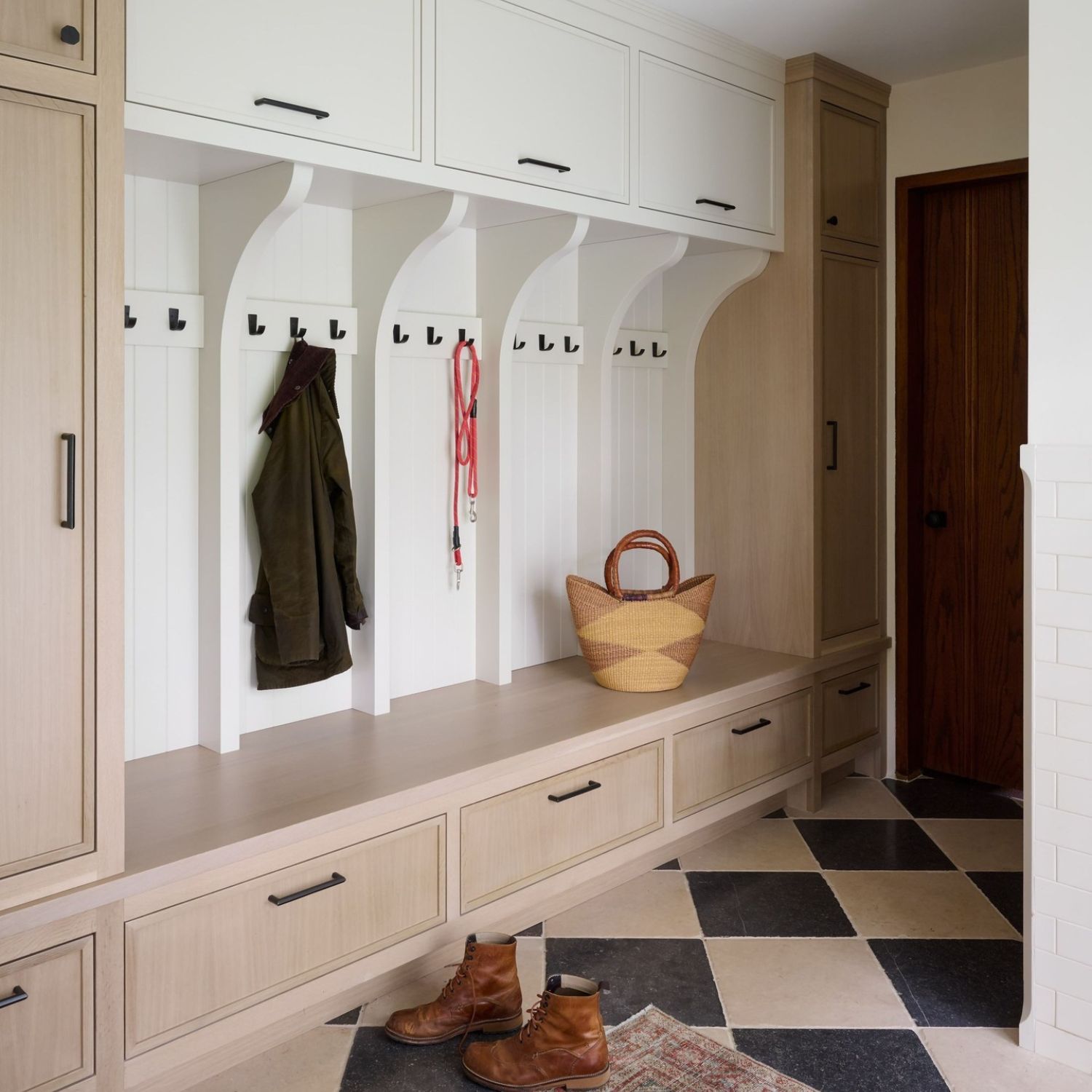
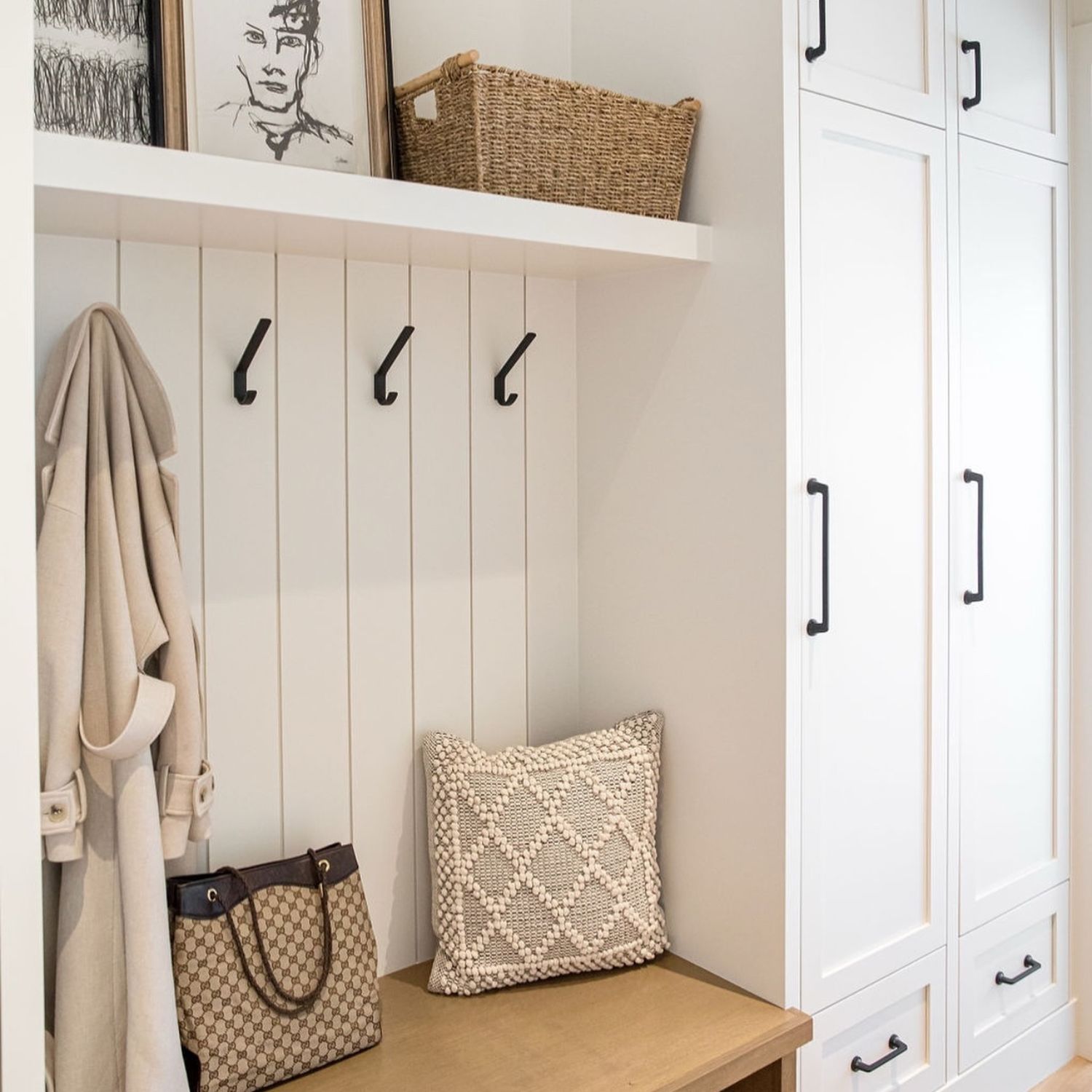
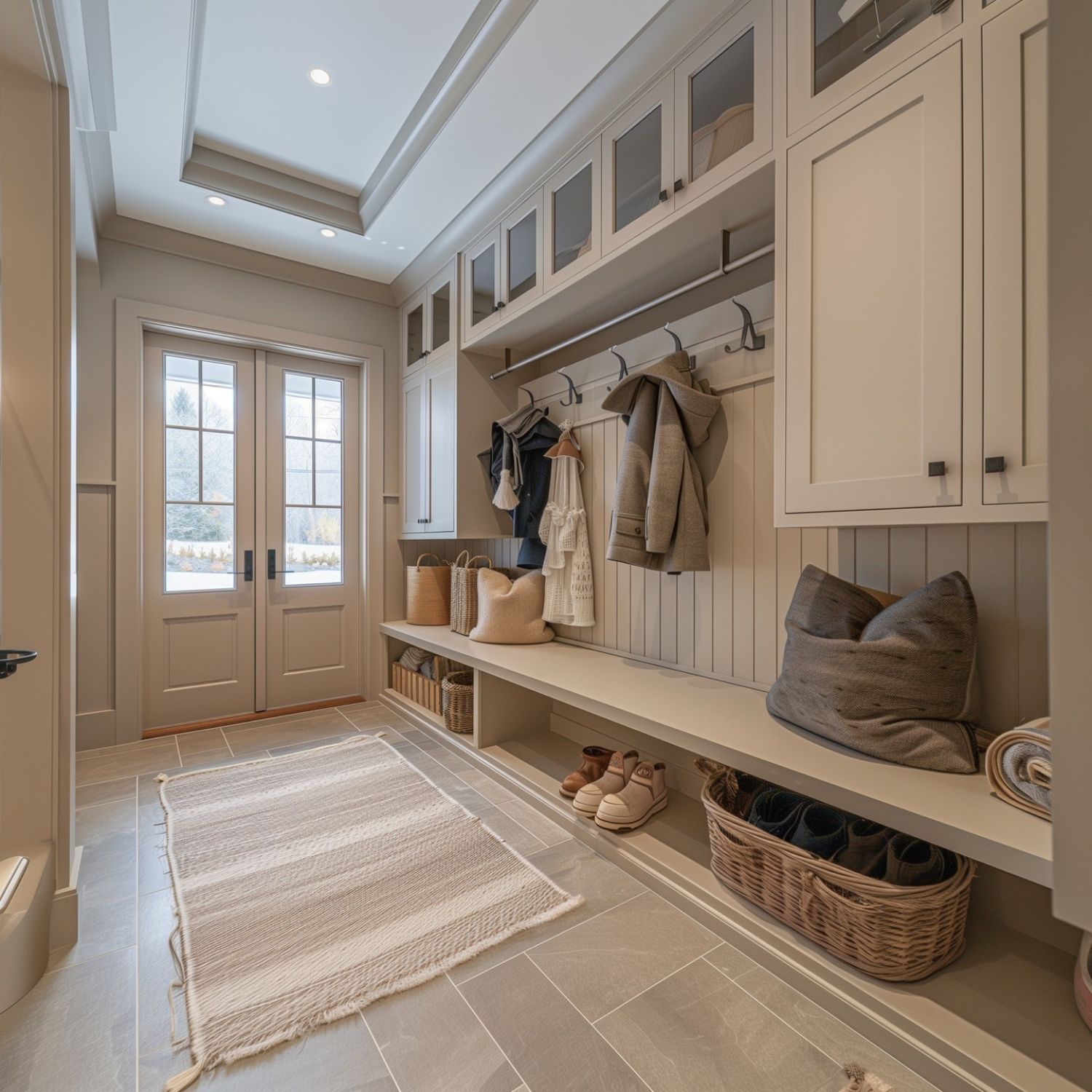
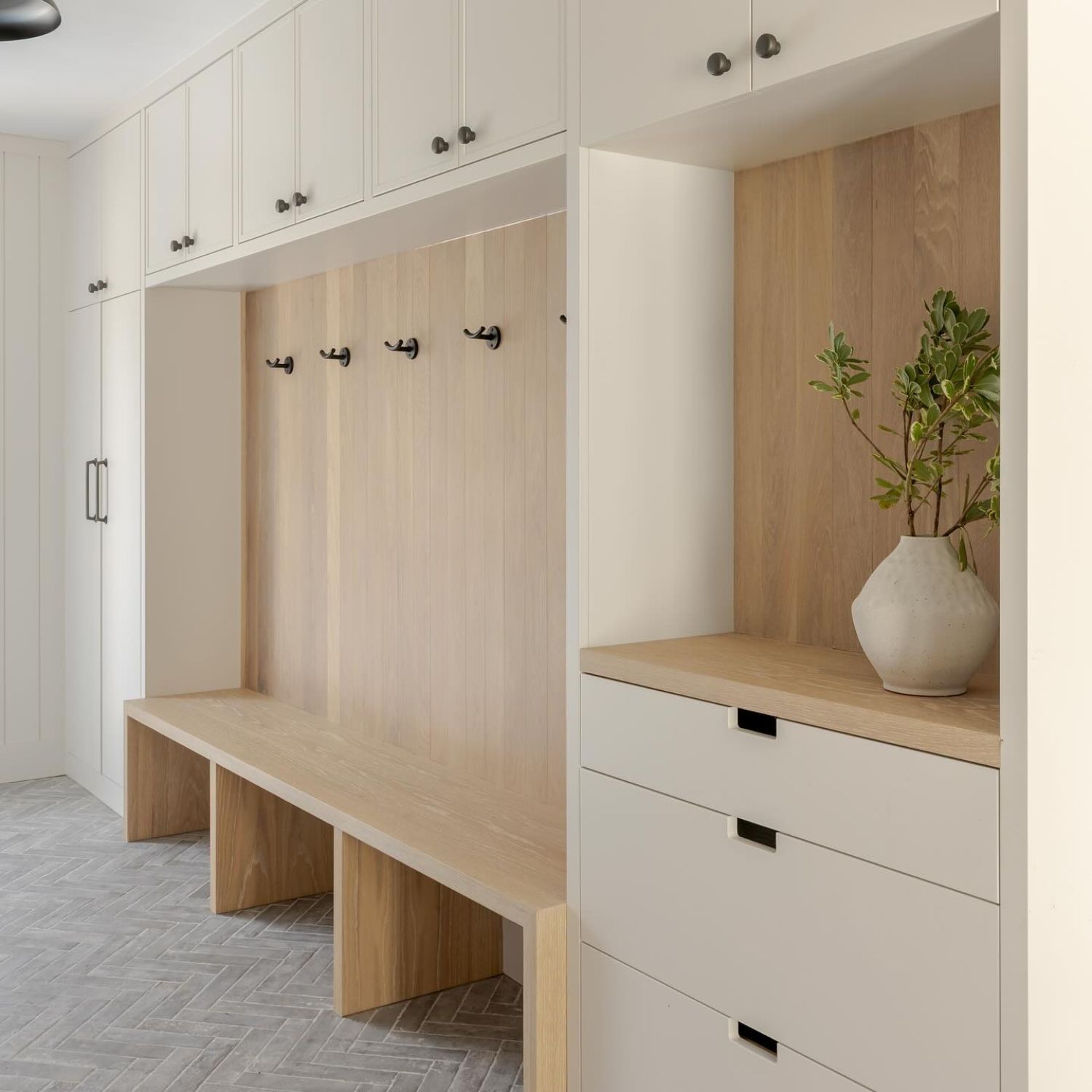
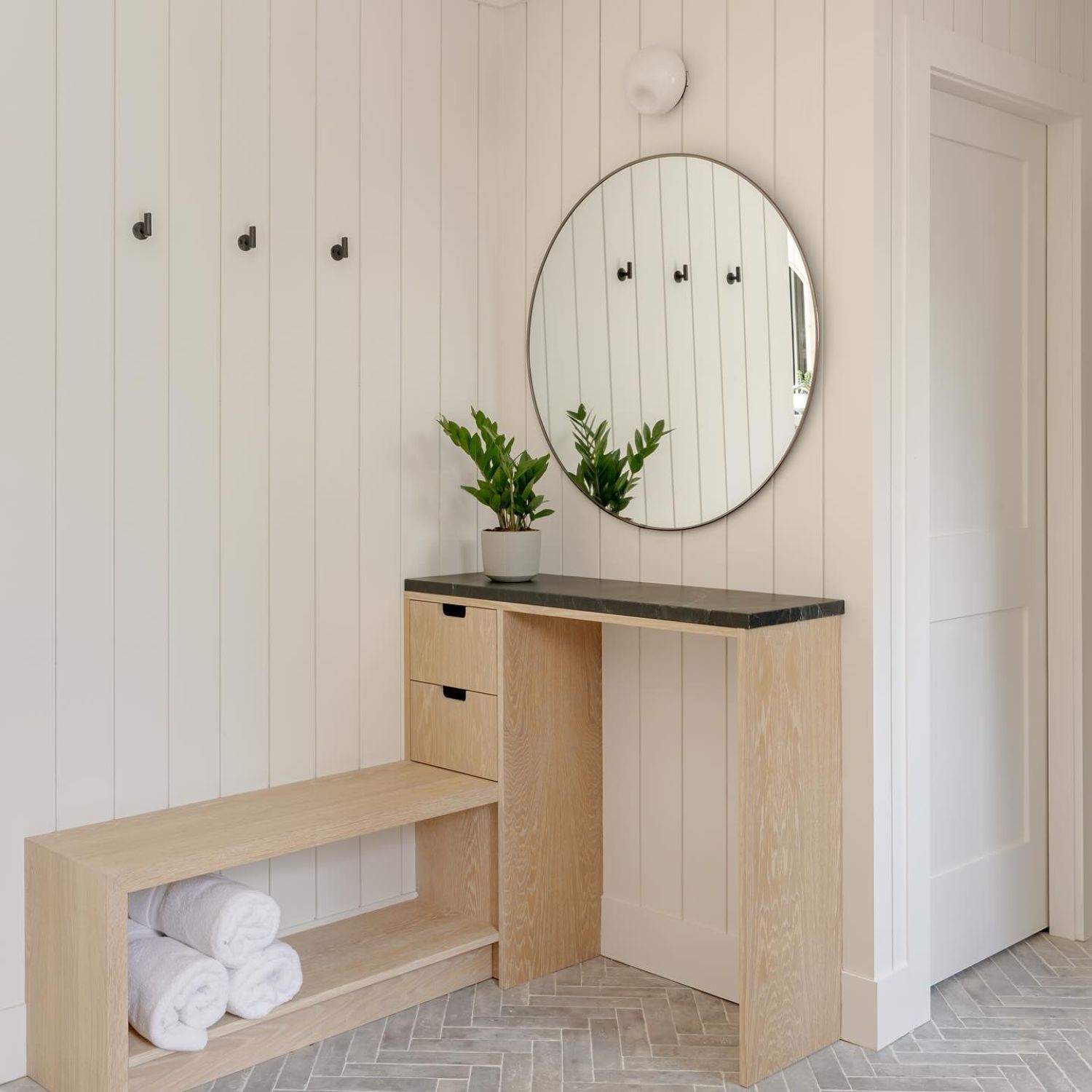
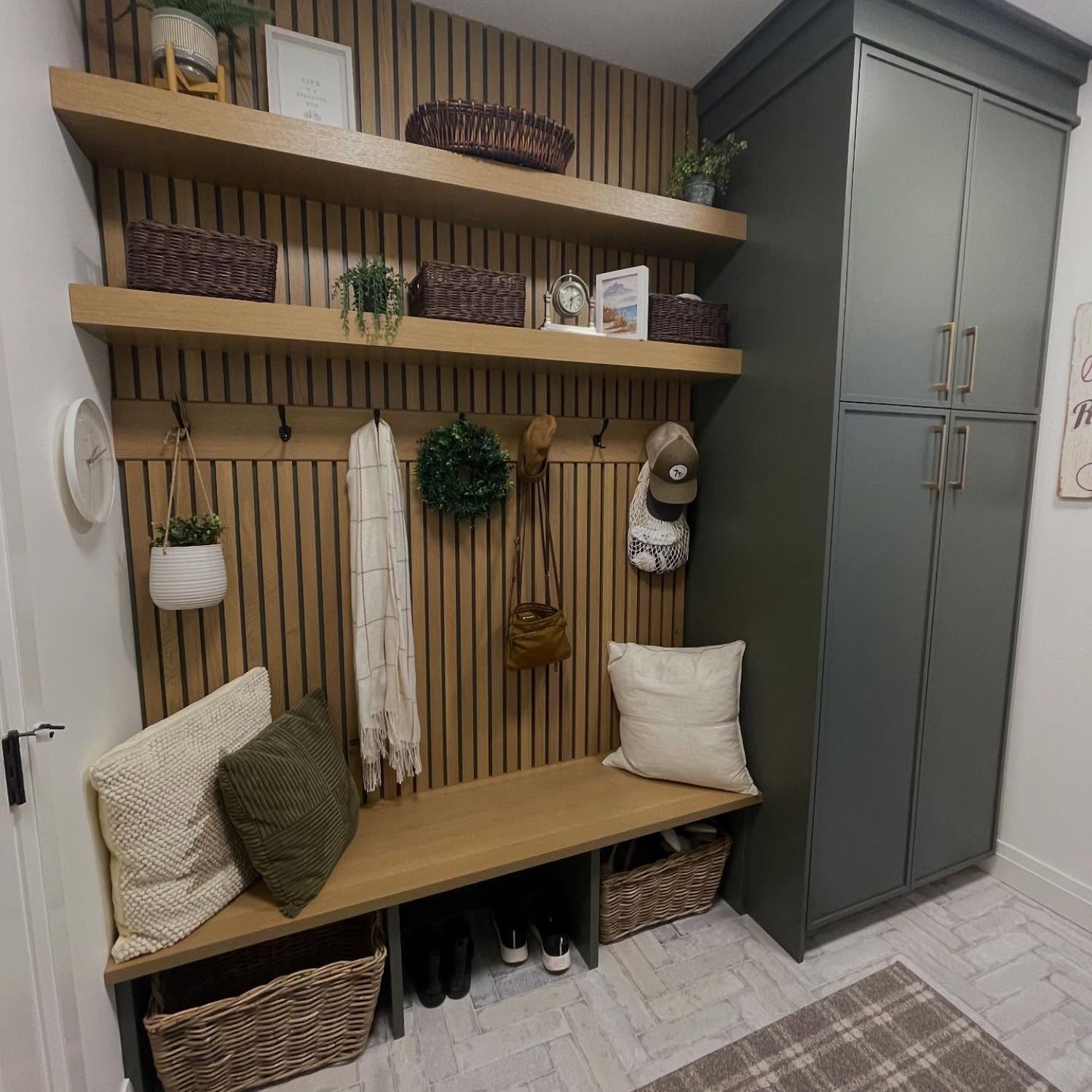
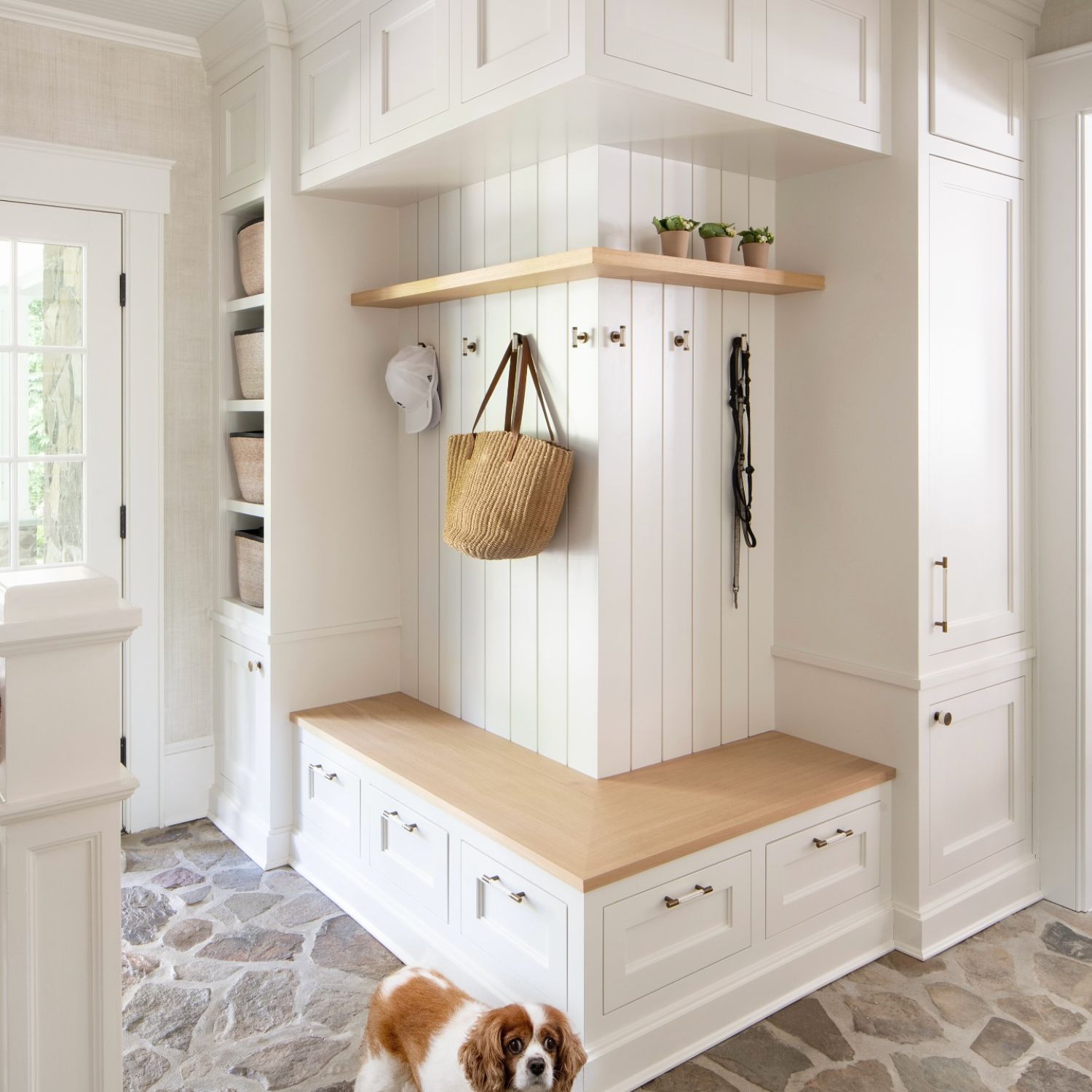
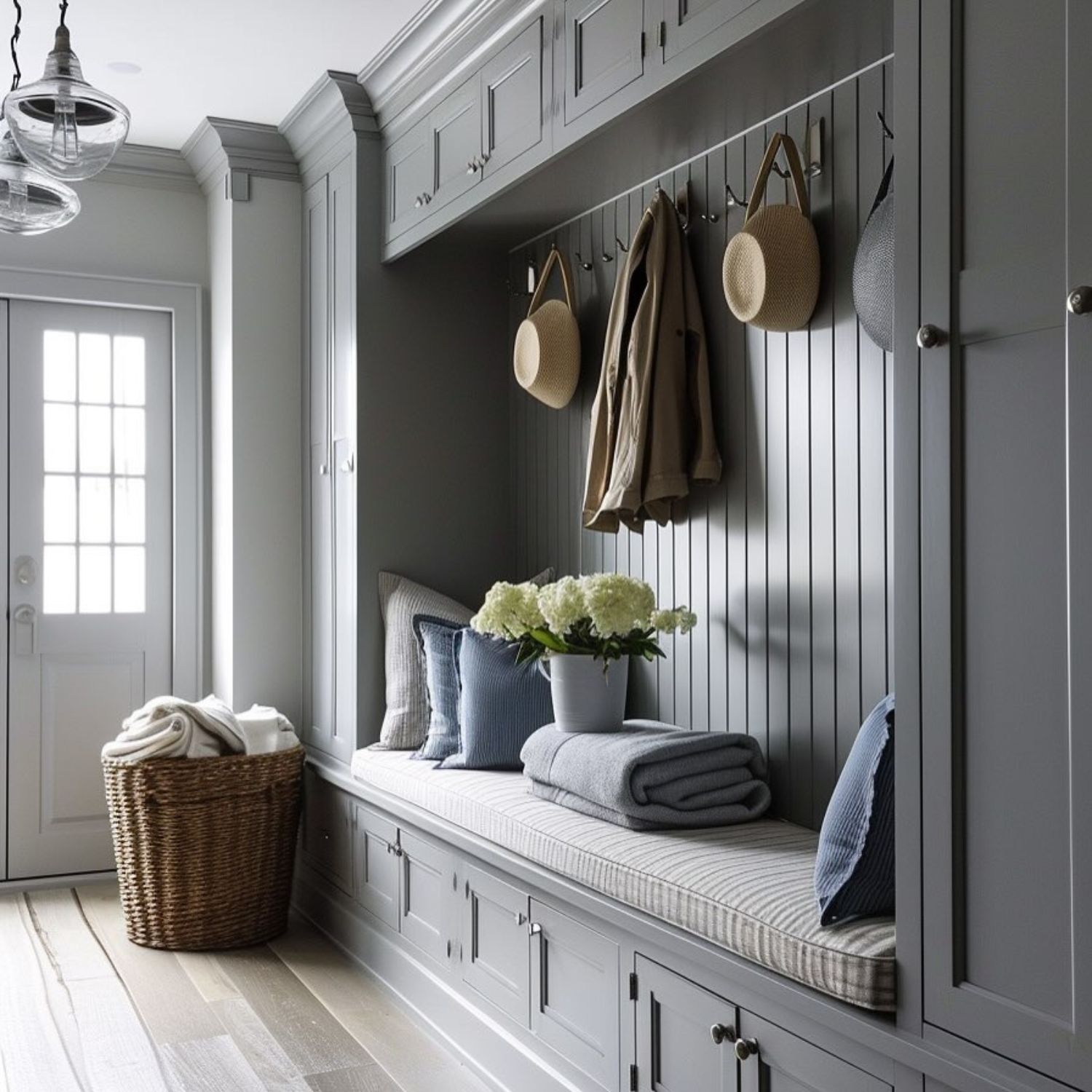
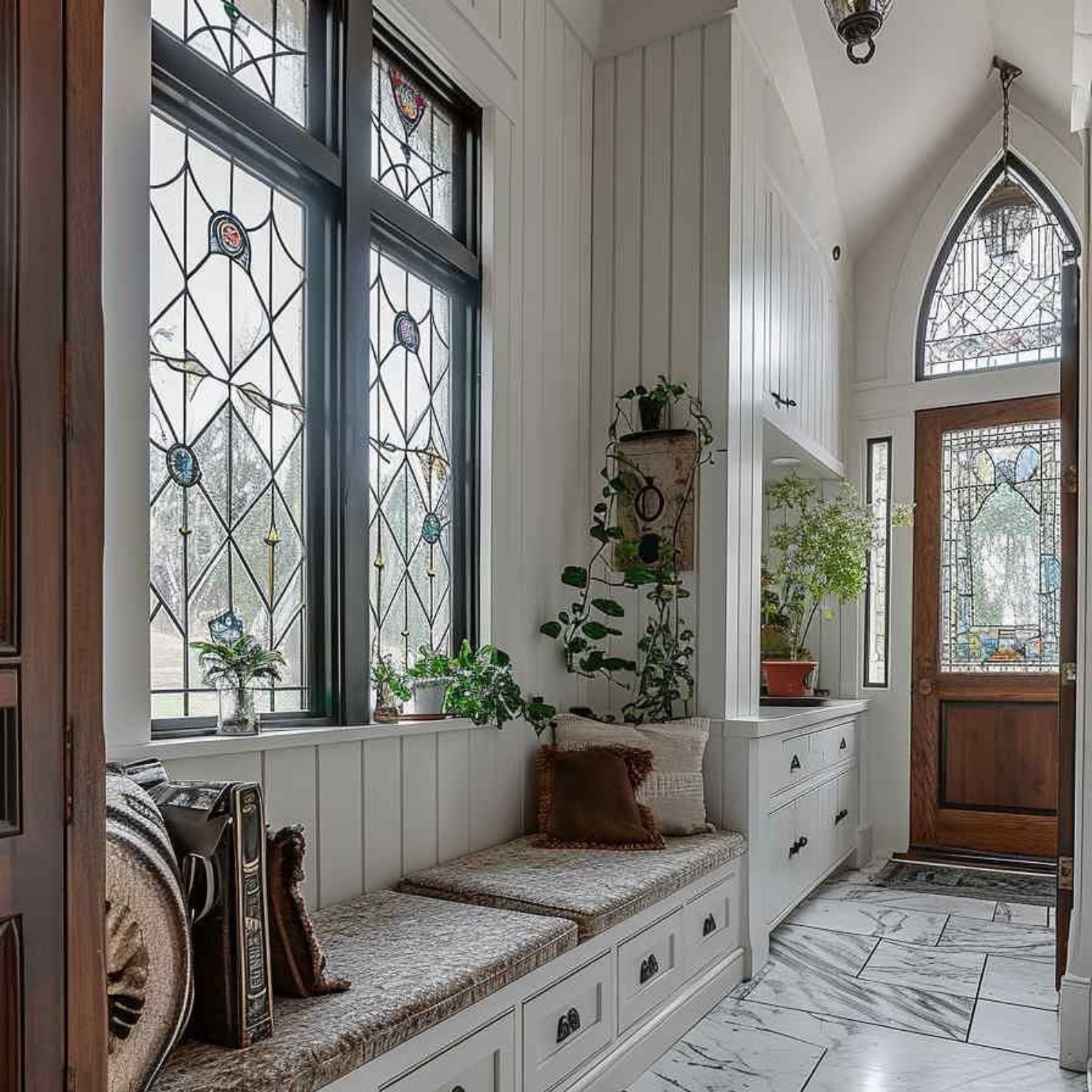
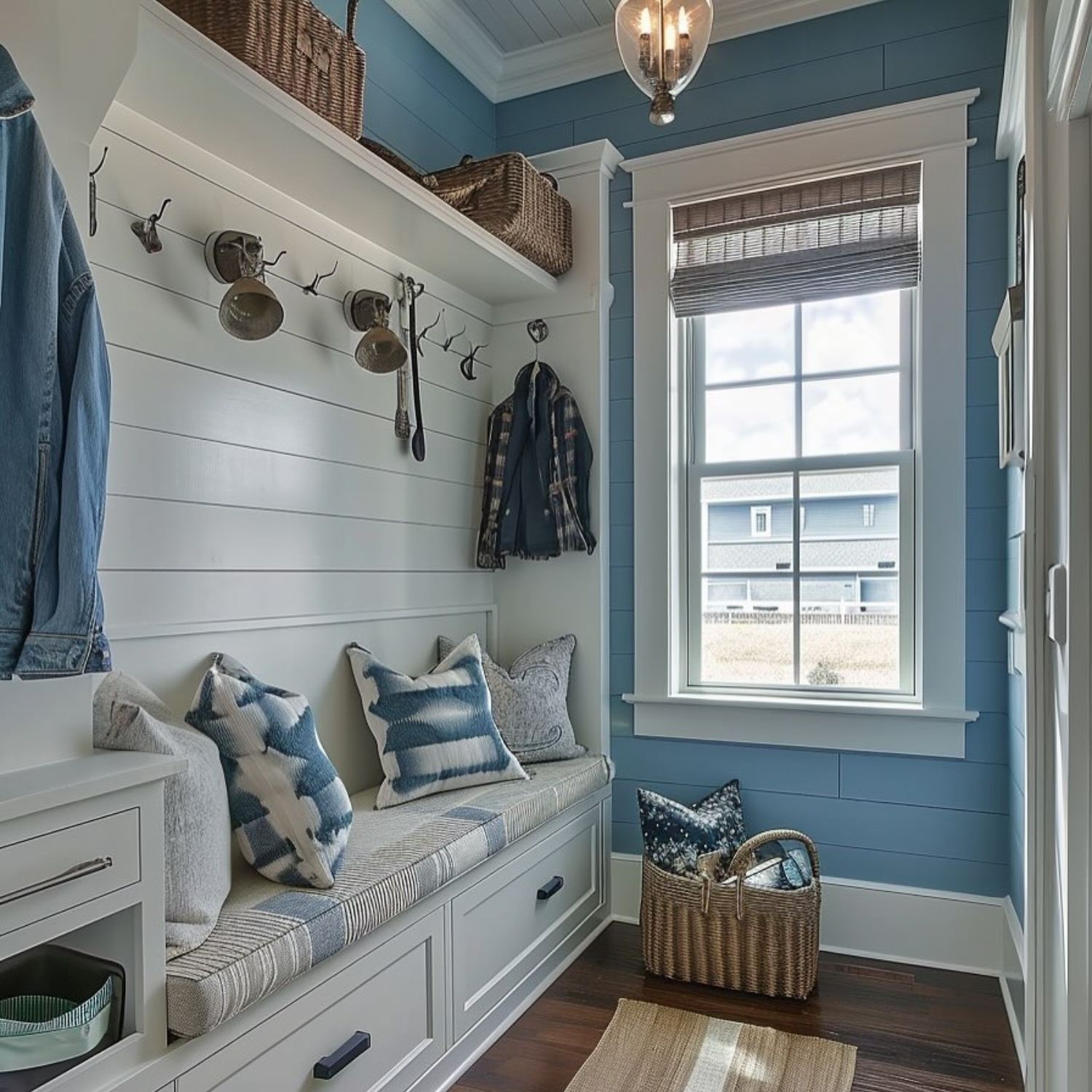
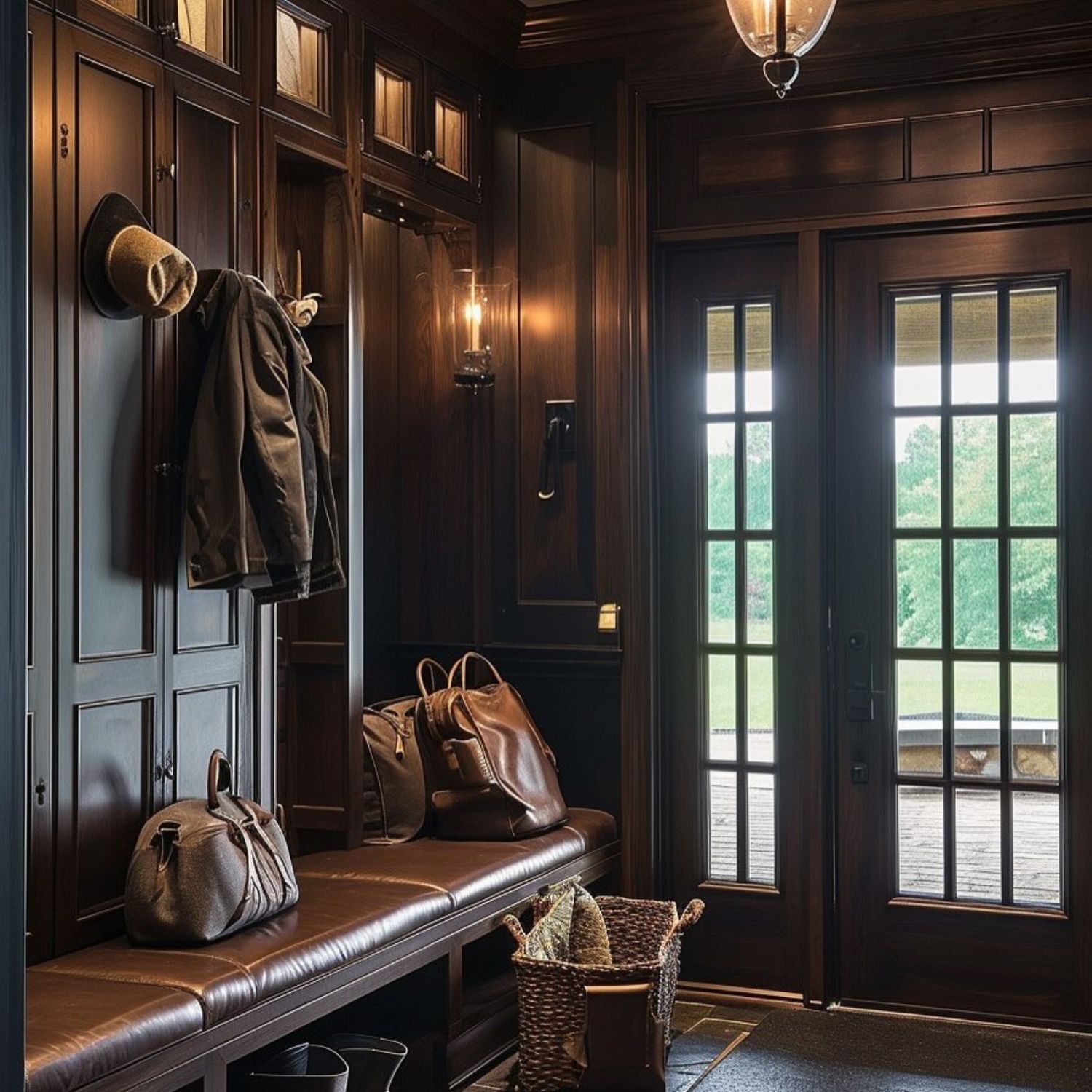
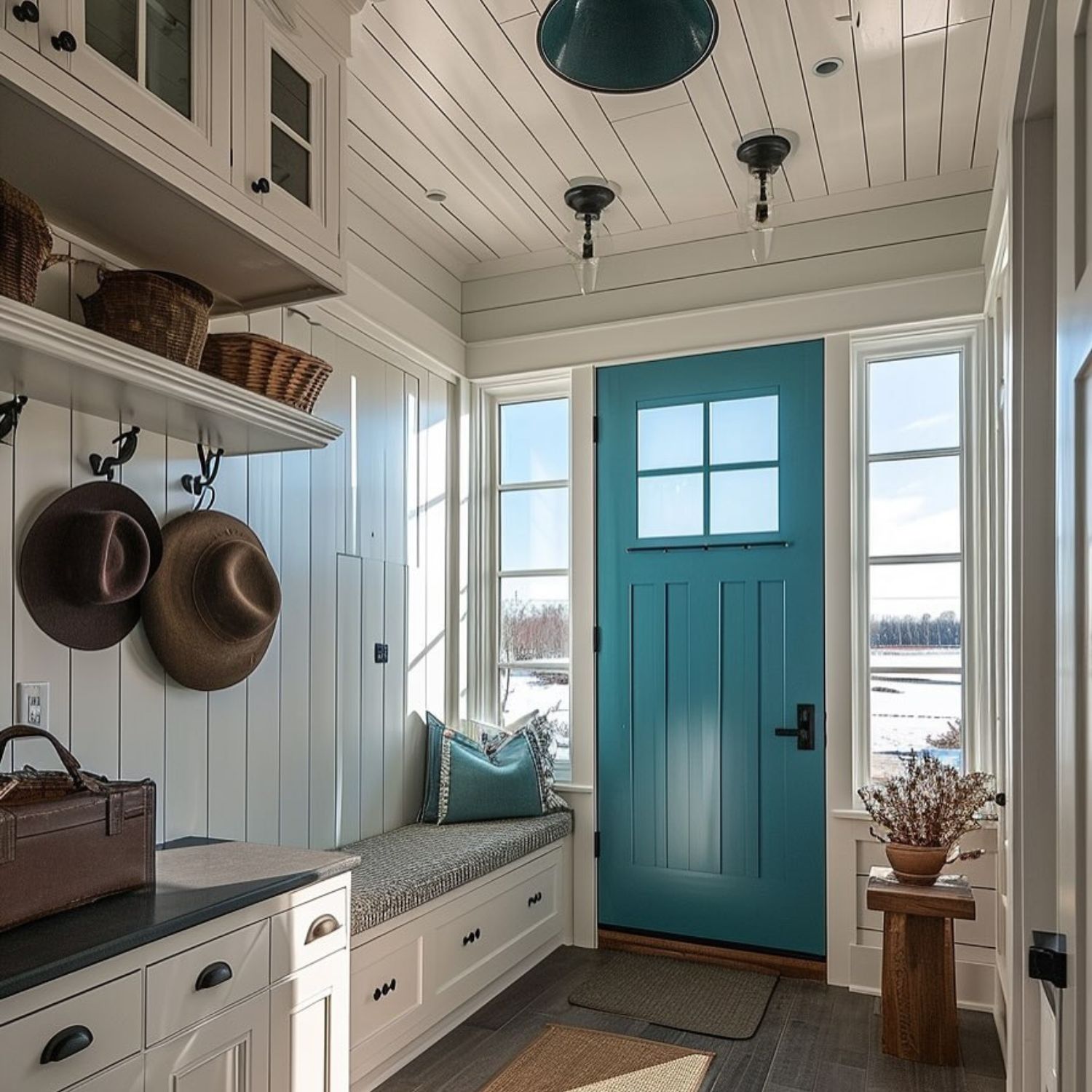
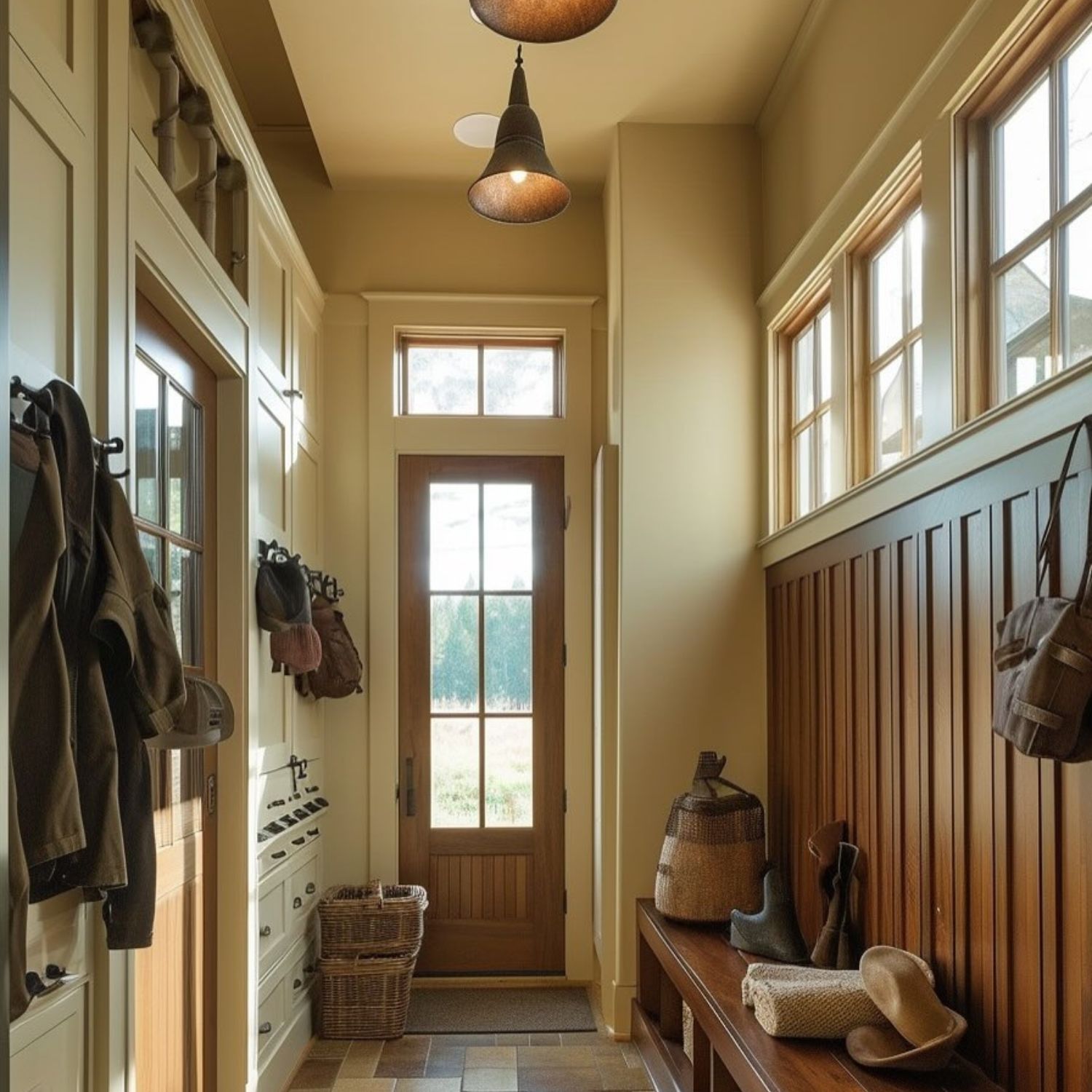
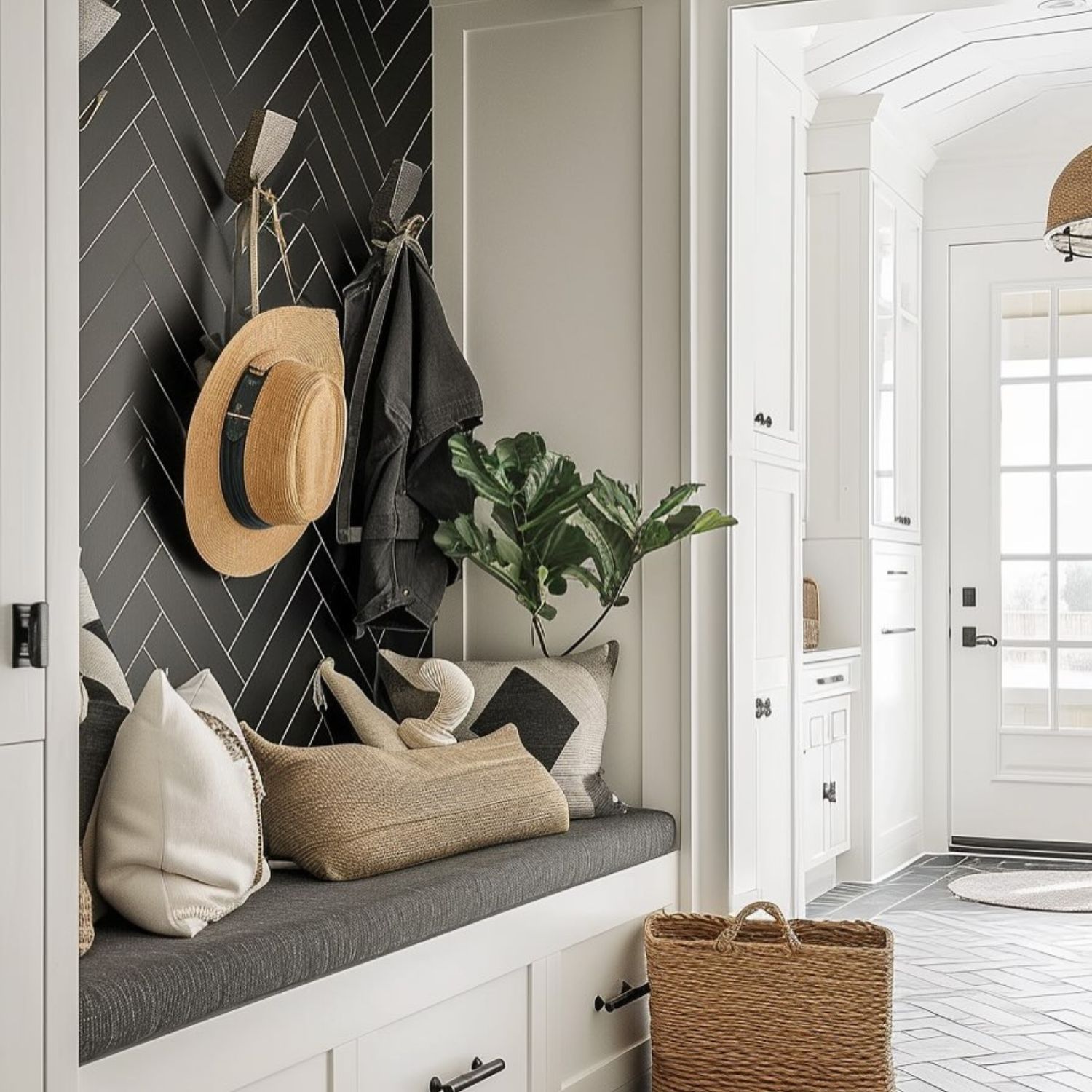
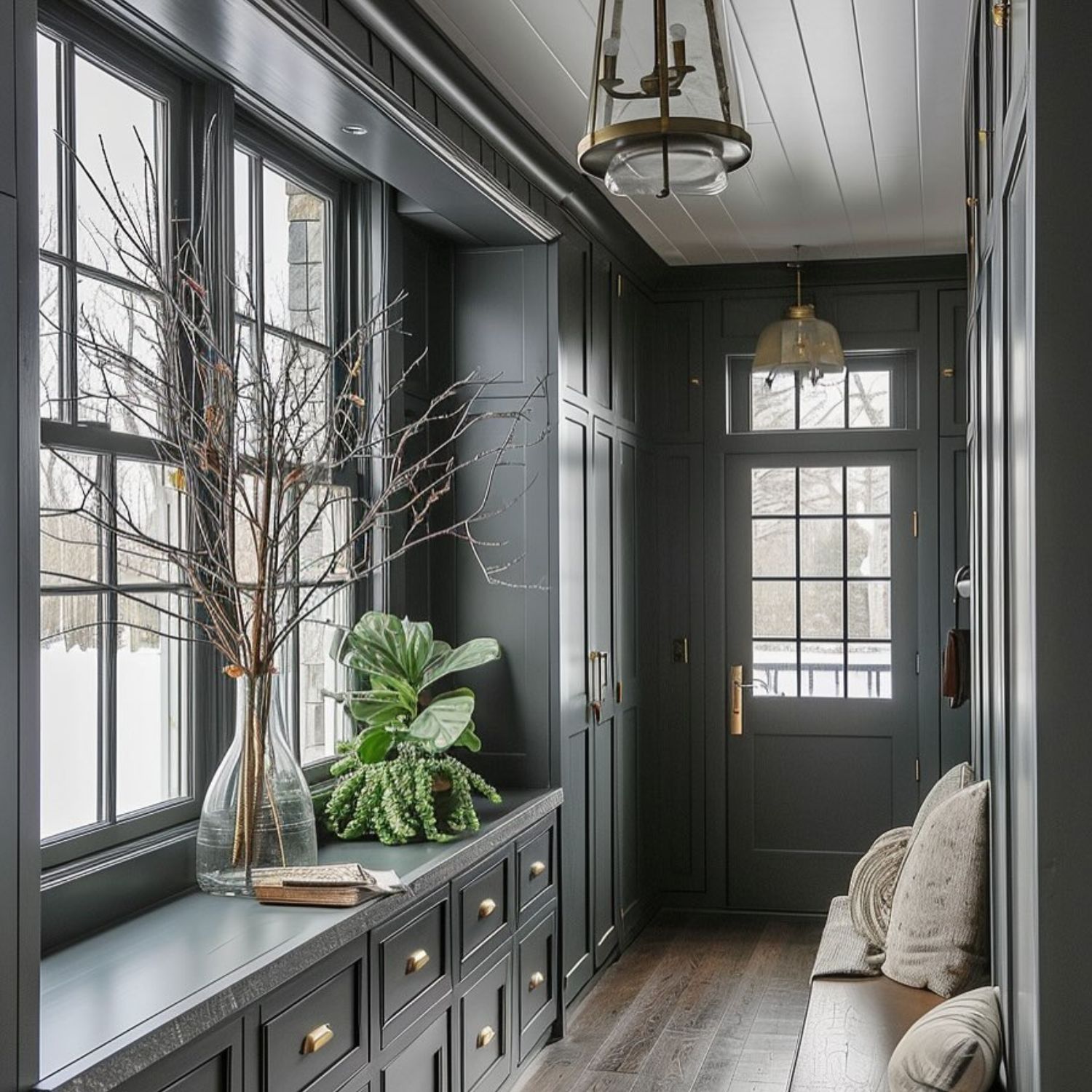
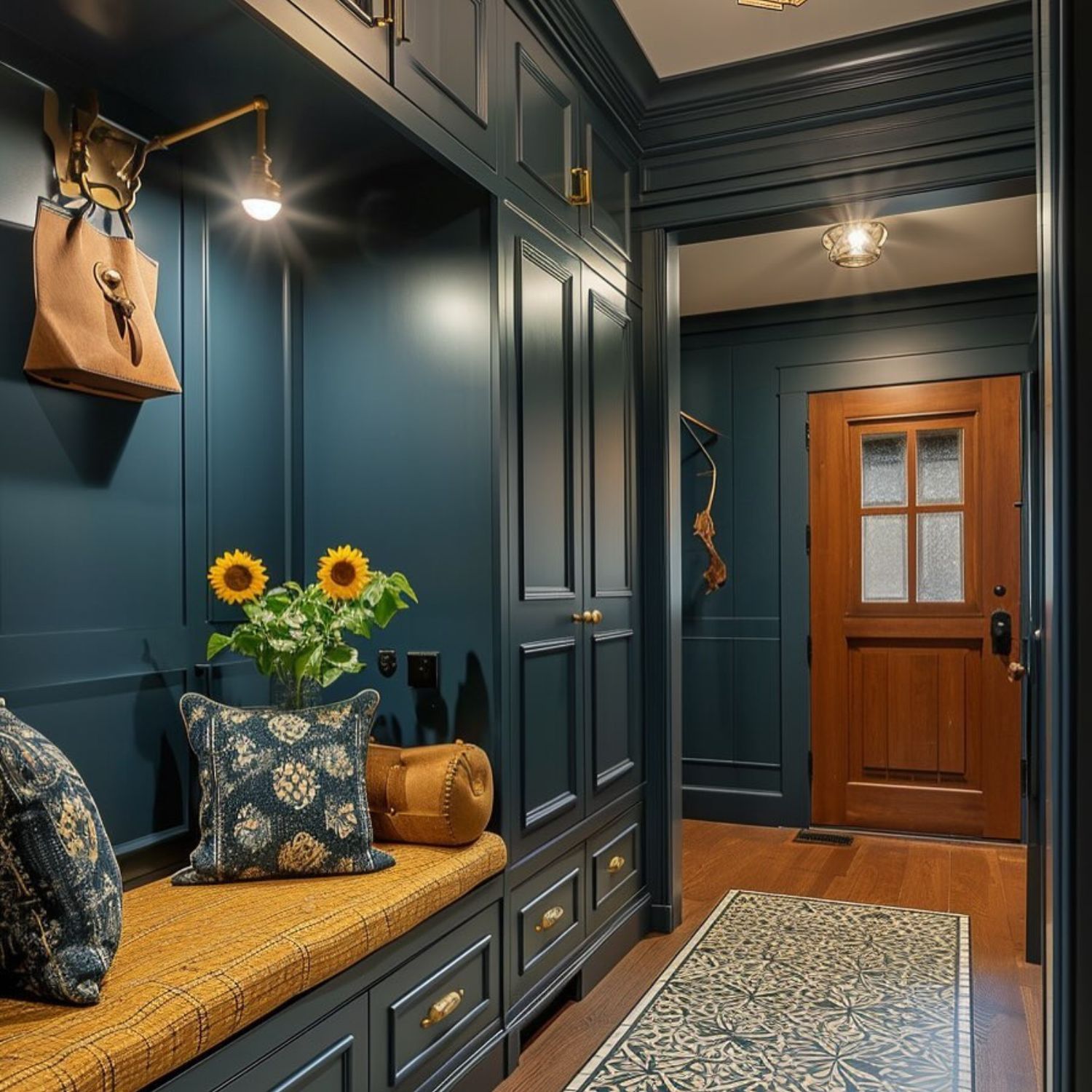
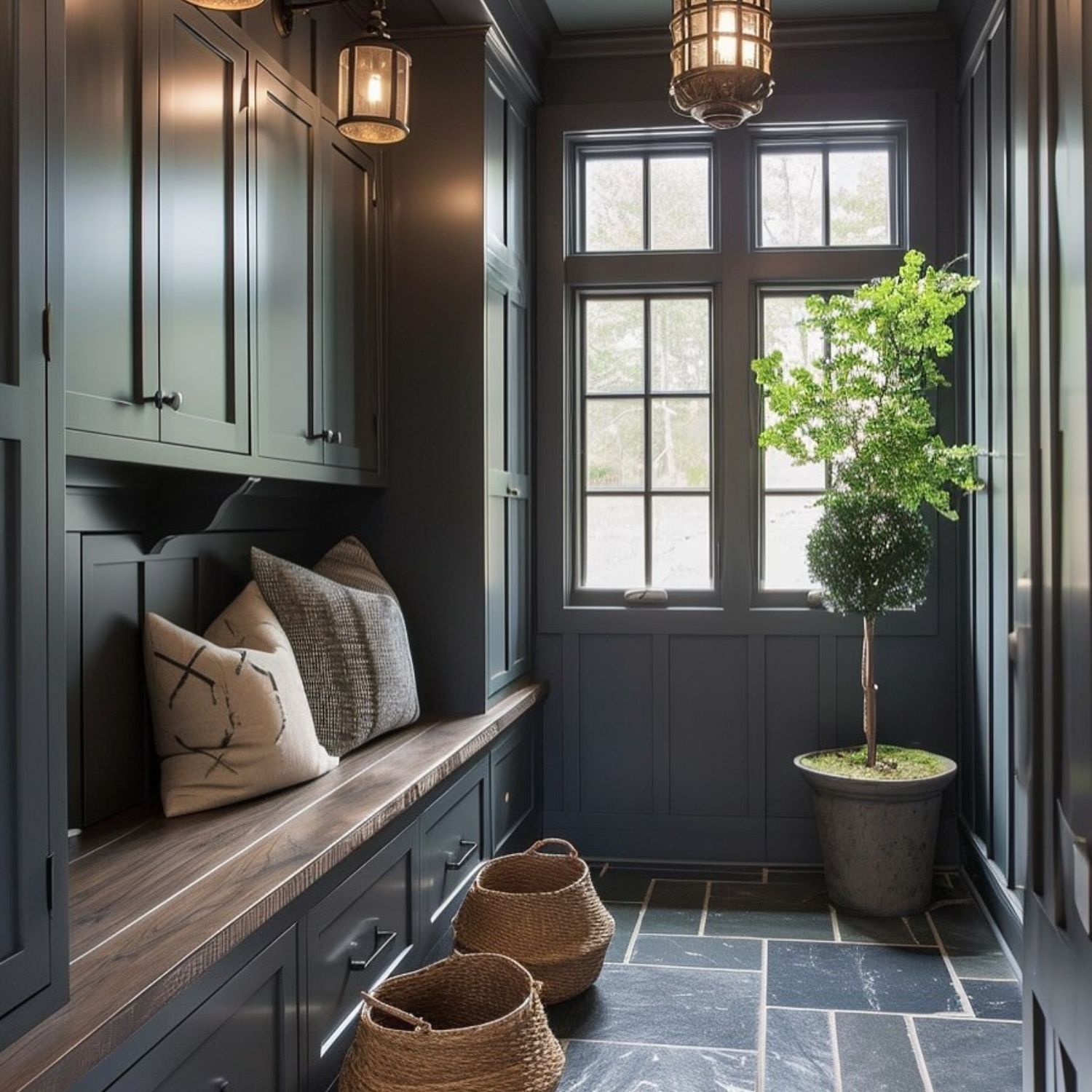
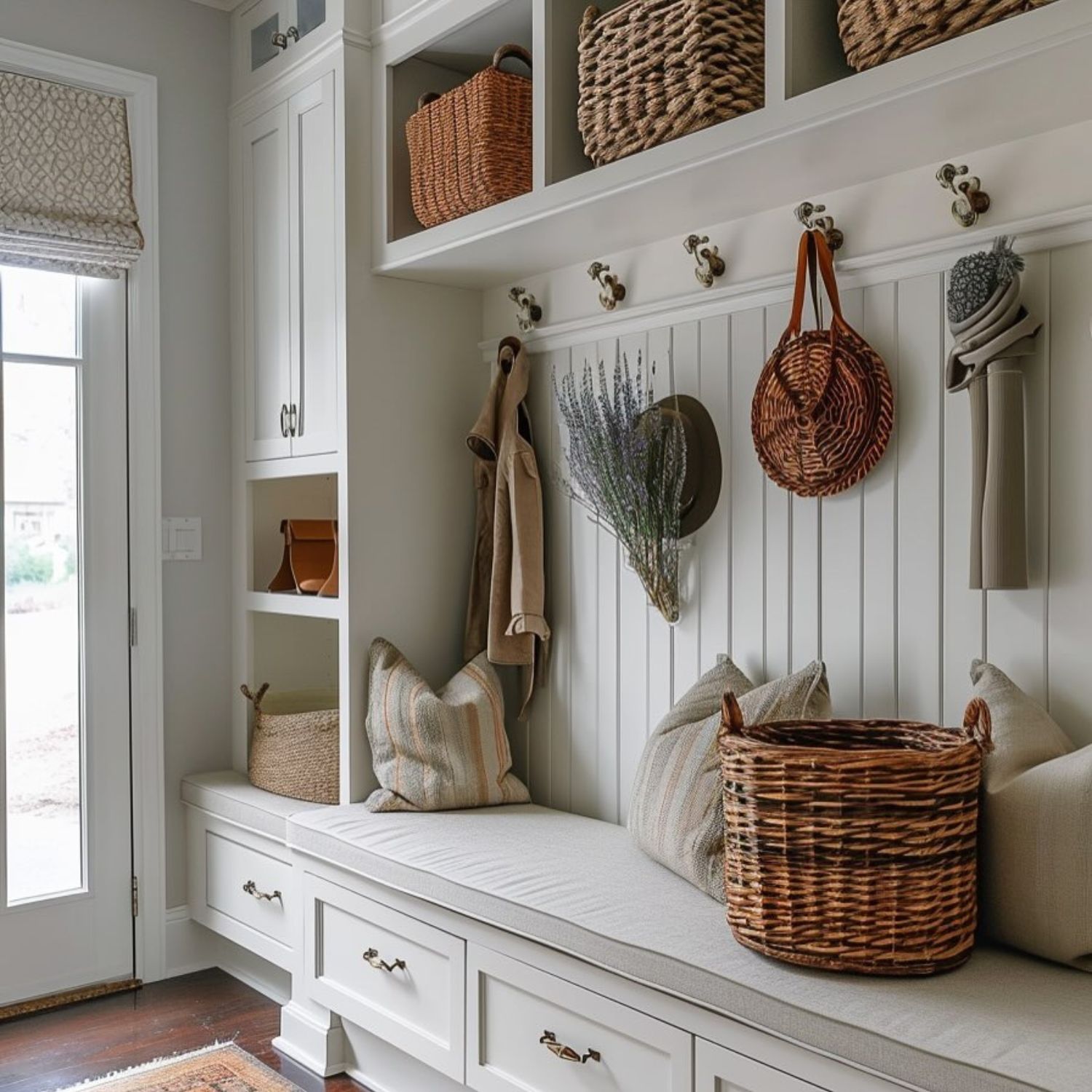
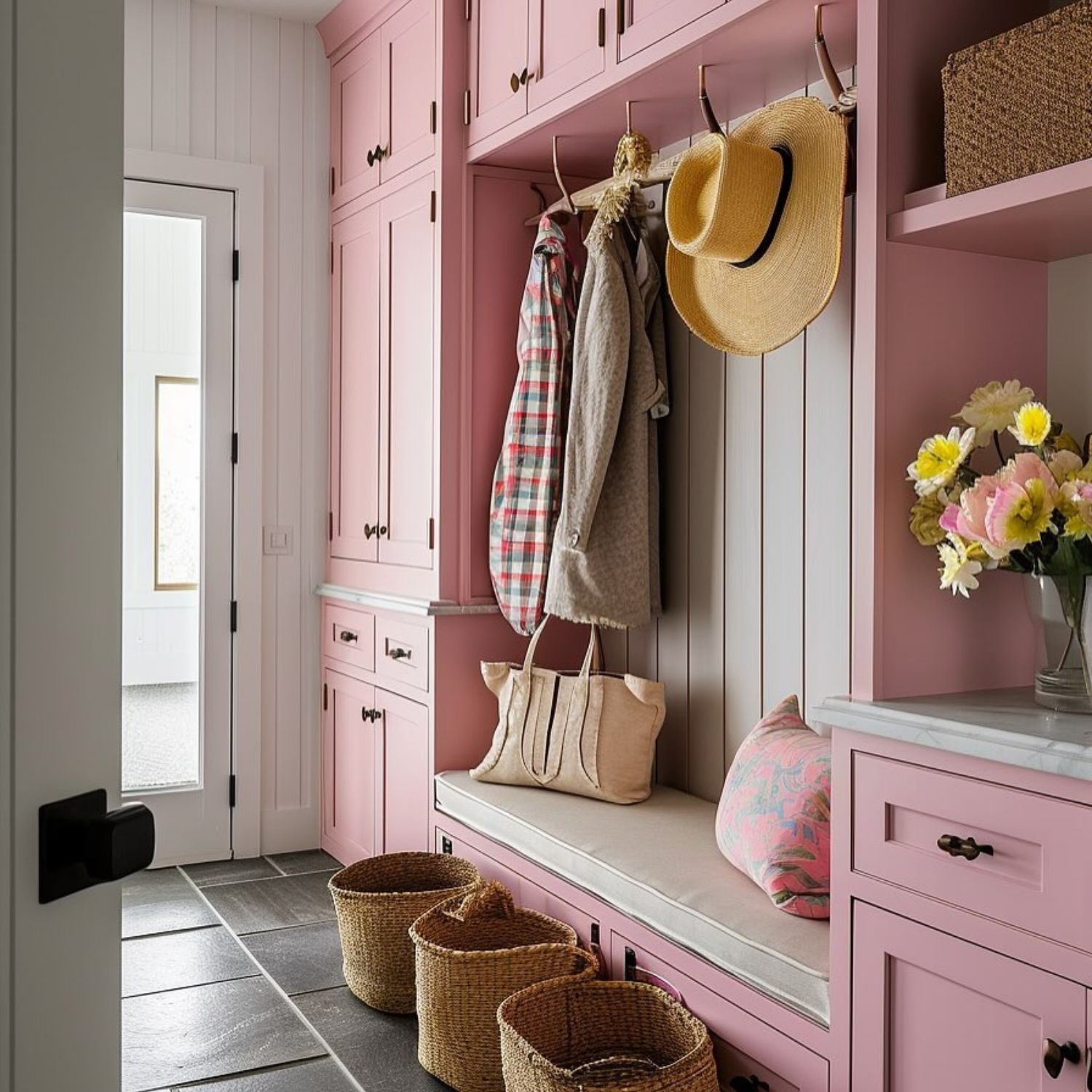
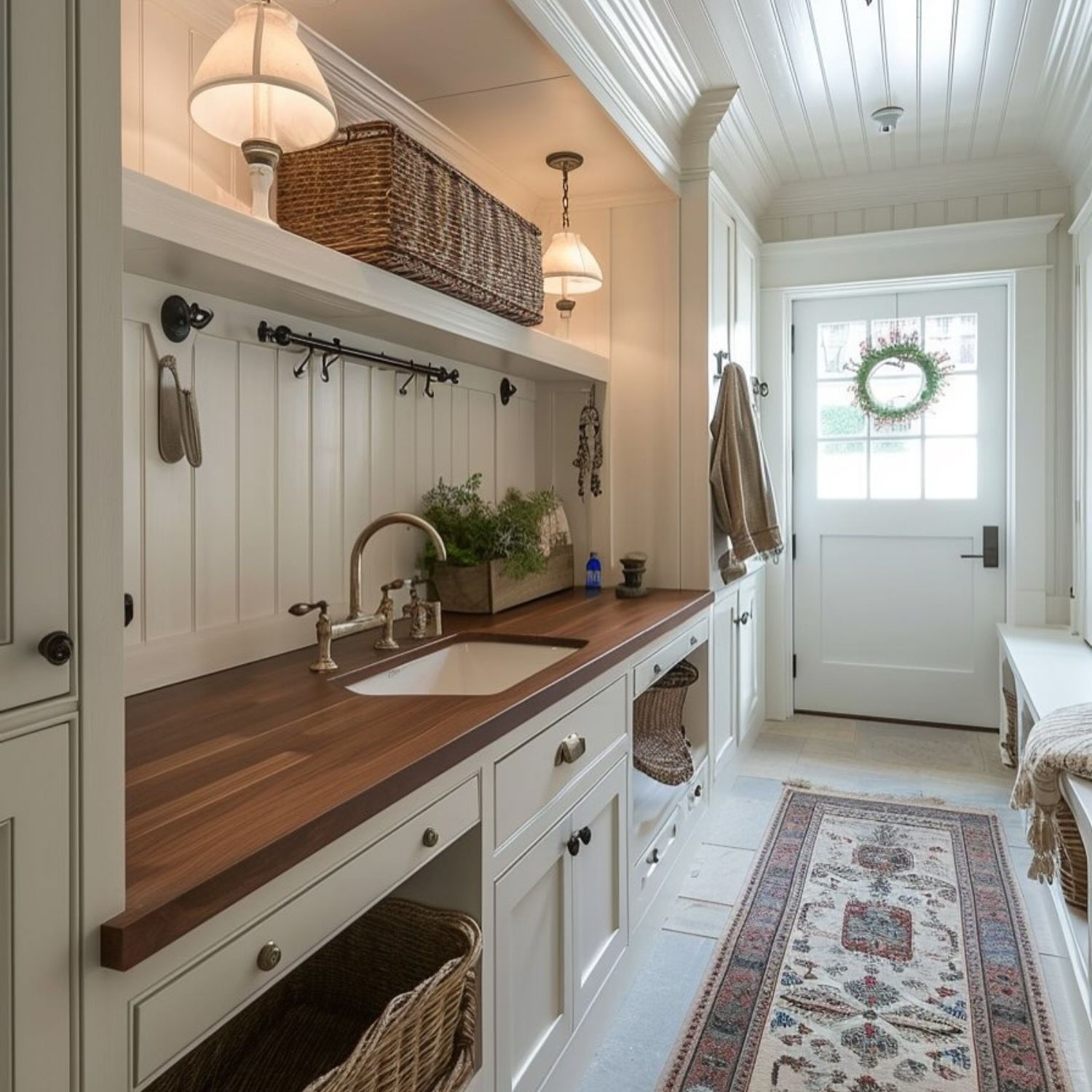
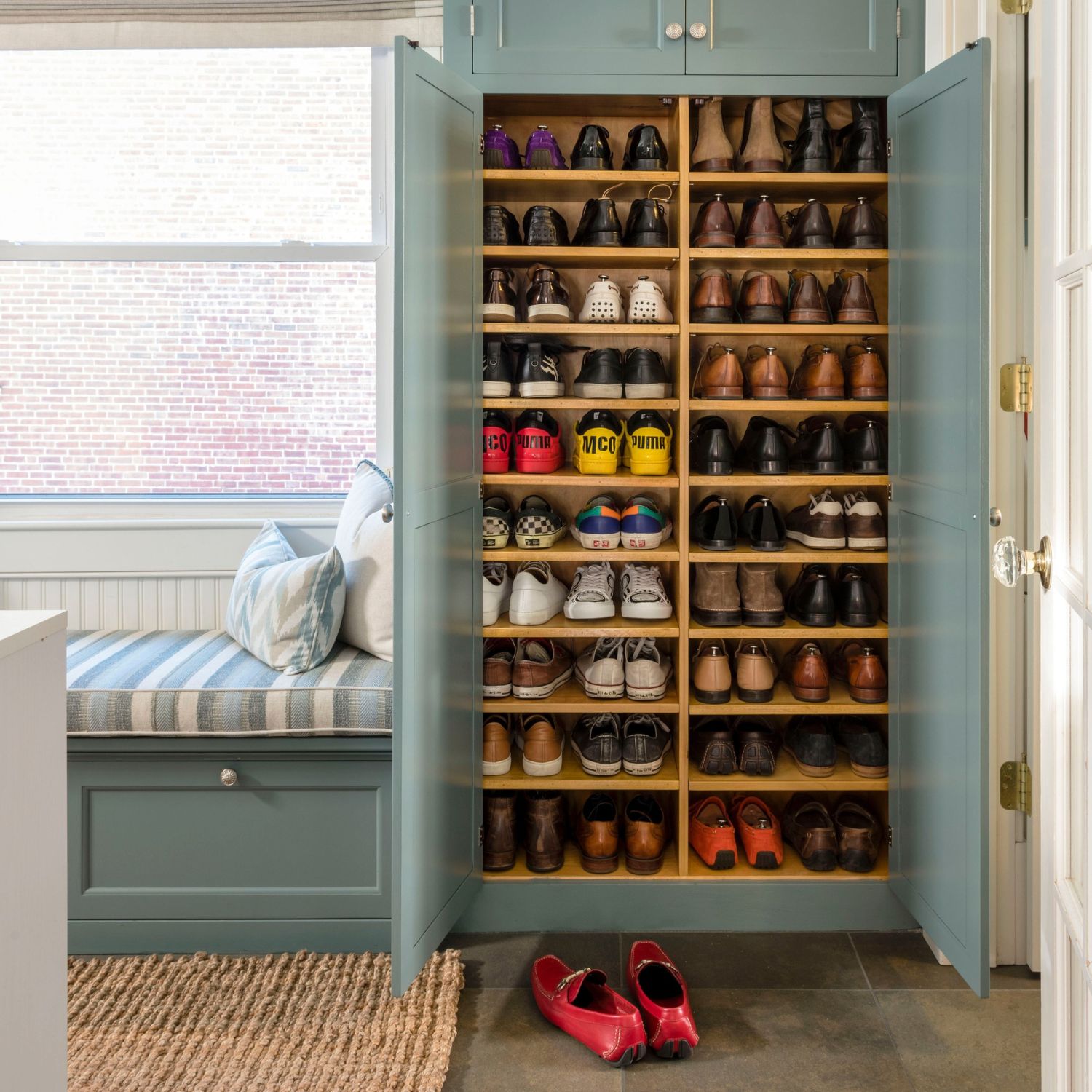
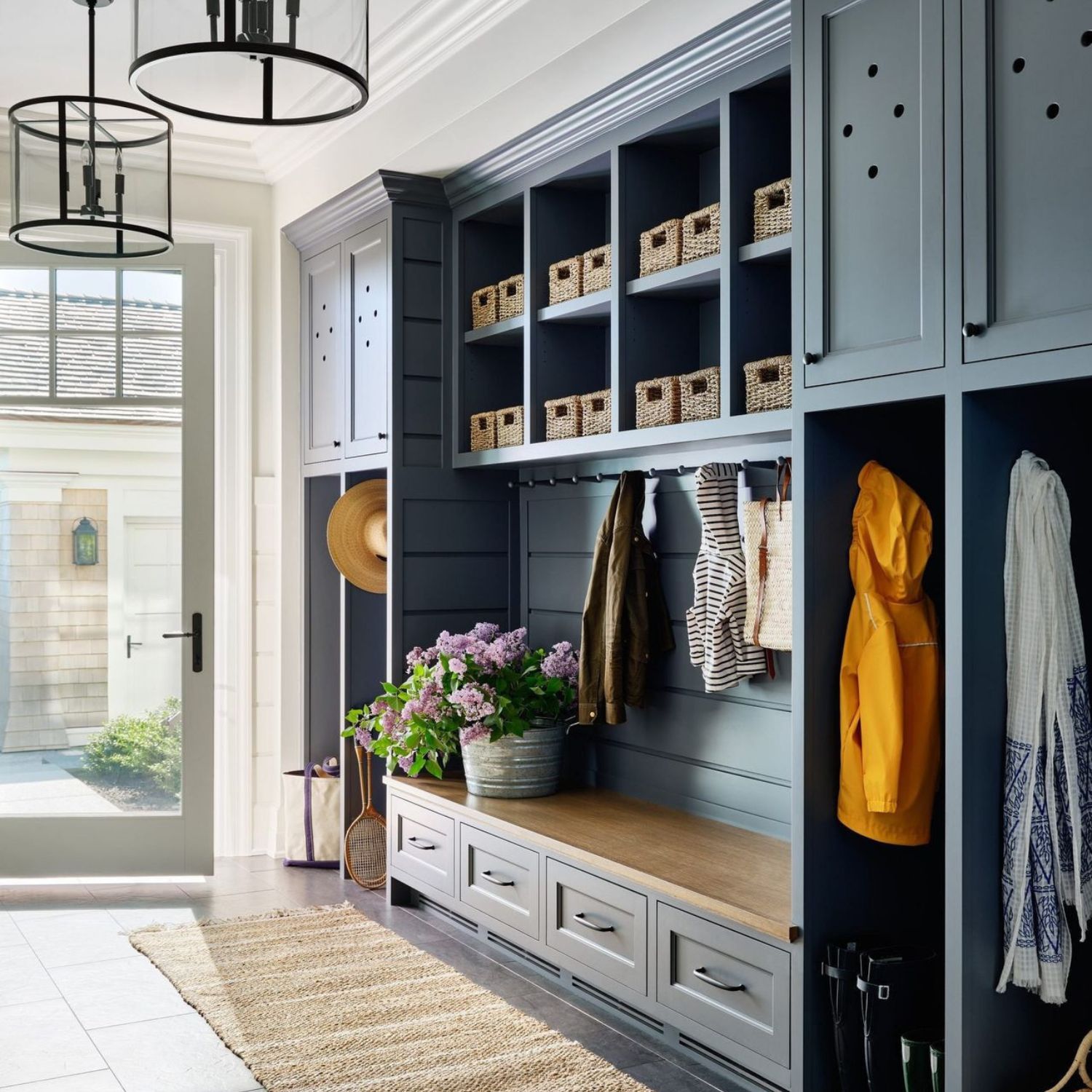
Image source: Instagram
FAQs
What is the purpose of a mudroom?
A mudroom serves as a transition space between the outdoors and your home interior, helping keep dirt, clutter, and wet gear out of your living areas.
Can I have a mudroom in a small home?
Yes! Even a small corner or entry hallway can be turned into a mudroom with the right hooks, bench, and storage setup.
What materials are best for mudroom flooring?
Tile, vinyl, stone, or waterproof laminate are best due to their durability and water resistance.
How much does it cost to build a mudroom?
₹1,500 to ₹3,000 per square foot for basic construction. A new, well-equipped mudroom addition could easily range from ₹5 lakhs to ₹15 lakhs or even more, depending on its size and features.
Can I combine the laundry room and mudroom?
Yes, it’s a smart combo — especially for families. It keeps messes contained and streamlines chores.

